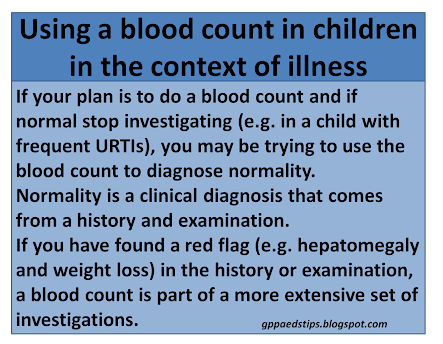I think that the hunt for a focus of infection in a child is a lot like a game called “Spot the Ball” in which people looked at a picture from a football game with the ball removed and tried to guess where the ball was.
Finding a focus of infection is a very interesting topic at the moment. More than ever, primary care clinical assessments are occurring remotely rather than face to face. Febrile children are being assessed without laryngoscopy or auscultation. This seemingly contradicts the tradition of the need to find a focus of infection. So what is the deal? I've been asked a lot of questions about this recently and I thought that the simplest thing to do was to bring together my answers.
Do I need to find a focus of infection?
No. There is no absolute need to find a focus of infection. Here are a few facts that disprove the idea that a febrile child needs a physical clinical assessment for focus of infection in every case:
- If finding a focus was mandatory, parents and carers would have to have their febrile child assessed on every occasion. Self-care without medical assessment would be neglectful and therefore a safeguarding issue.
- Even if you believe that medical assessment should take place, this only provides a snapshot. Childhood febrile illnesses are dynamic and the focus can change. A child who has an otitis media now could have mastoiditis before the day is over. If we always need to know the focus, you would never be able to send the child out of your sight.
Does a runny nose count as a focus of infection?
Yes, but the question of infection doesn't work like that. A child with a runny nose and a non-specific cough can be presumed to have an upper respiratory tract infection. The real question is, do they have features of another more significant focus? If they have difficulty breathing, are seriously unwell or specific features of something else (e.g. reduced conscious level) then the assumption flicks from "presumed uncomplicated URTI" to "presumed complication of URTI".
One of the values of giving credibility to non-specific respiratory symptoms is that it helps to answer the age-old question of "should I get a urine sample from this child?" That's a whole new can of worms. In a massively oversimplified answer, if they are well and have a cough and runny nose you don't need one. If they have no cough or runny nose you do need one, especially if they have abdominal pain, vomiting without diarrhoea or have strong smelling urine.
So if focus can be misleading and can change soon after I've assessed it anyway, what am I actually supposed to be doing?
Treat the assessment of an unwell child like a game of spot the ball. There will be clues and distractions. There will be things that direct and misdirect. The main task is to look for signs of a focus that needs to be treated. Uncomplicated upper respiratory tract infection (including tonsillitis and otitis media) are not on the list of things that must be identified and treated. What is interesting is that uncomplicated lower respiratory tract infection’s (LRTI/ pneumonia) place on the list is increasingly in question.
What is on the list of significant infections and how do I detect these?
- Complications of URTI are rare but significant. Externally, mastoiditis and lymph node abscess can be detected clinically. Internally, peritonsillar abscess should be looked for in a child who is unable to swallow despite adequate analgesia.
- Central nervous system (CNS) infection (meningitis, encephalitis, abscess) disproportionately affect function and behaviour. Reduced or focally abnormal CNS function is a red flag. Signs and symptoms are often non-specific in children but the non-specific signs such as inability to settle are persistent in a way that is unusual for uncomplicated infections.
- Pneumonia, when accompanied by significant respiratory distress or systemic effects is still going to be on the list. The fact that there is mounting evidence that pneumonia without significant effects does not mandate treatment simplifies the assessment of focus. Localised signs on auscultation is a focus but the need for antibiotics in the absence of more significant findings is questionable.
- Urinary tract infection is a paradoxical focus in children. While UTI can self resolve without significant likelihood of complications, these low grade infections often go undetected. The UTIs that are clinically apparent in children are the most severe UTIs. It is therefore normal to treat all UTIs especially in pre-school children. Urine samples should be tested if there is no clear focus elsewhere. In the child under three years old, ideally these samples are sent for microscopy and culture.
- Finally, there is the focus that is not actually infection. Inflammatory diseases such as Kawasaki and PIMS-TS present with 5 or more days of unrelenting fever, mucousitis and a very miserable child. Consider this possibility when the child is worse or no better on day 5 of a febrile illness.



























